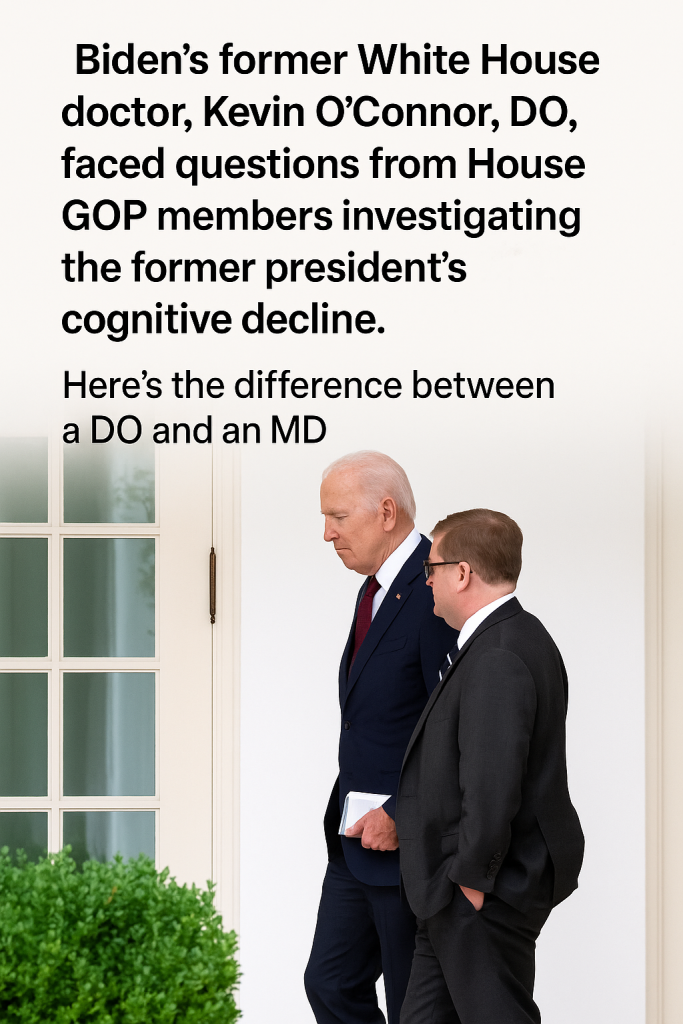In a recent development stirring political and medical attention, Dr. Kevin O’Connor, DO, who served as President Joe Biden’s White House physician, has come under scrutiny from House GOP members investigating the president’s cognitive health. This inquiry has renewed public interest not only in the details of Biden’s medical fitness but also in understanding the qualifications of his physician, specifically the difference between a Doctor of Osteopathic Medicine (DO) and a Doctor of Medicine (MD).
Dr. Kevin O’Connor’s Congressional Appearance
During a high-profile congressional hearing, Dr. O’Connor faced detailed questioning by Republican lawmakers concerned about the reported signs of cognitive decline in President Biden. While no conclusive evidence was presented about the president’s health status, GOP members pressed the former White House doctor about the nature of cognitive assessments performed and how results were communicated to the administration and public.
O’Connor, known for his medical professionalism during Biden’s tenure as vice president and then president, emphasized the thoroughness of routine medical evaluations and the administration’s commitment to transparency regarding presidential health. Despite this, the hearing underscored political tensions surrounding the president’s mental fitness ahead of the 2024 election cycle.
DO vs. MD: What’s the Difference?
Amid the focus on Dr. O’Connor’s role, many observers have asked about the distinction between a DO and an MD — especially since O’Connor holds a DO degree. In the United States, both DOs and MDs are fully licensed physicians capable of practicing medicine, performing surgeries, and prescribing medications. However, there are subtle differences in their training and approach.
An MD (Doctor of Medicine) follows an allopathic medical training path, which traditionally emphasizes diagnosis and treatment of human diseases using medications, surgery, and other conventional methods. MD programs are typically rooted in a biomedical framework focused on disease management.
A DO (Doctor of Osteopathic Medicine) receives similar medical training but with additional emphasis on holistic patient care and the musculoskeletal system. DOs are trained in osteopathic manipulative treatment (OMT), a hands-on technique intended to diagnose, treat, and prevent illness or injury. This approach reflects osteopathic medicine’s philosophy to treat the whole person, not just symptoms.
Both degrees require passing rigorous licensing exams, completing residencies, and maintaining continuing education. Importantly, hospital privileges and board certifications are equally accessible to DOs and MDs, reinforcing that both paths yield highly qualified physicians.
Why It Matters in Politics and Medicine
The attention given to Dr. O’Connor’s DO credential during the hearing reflects common public misconceptions about osteopathic physicians compared to their MD counterparts. In the political arena, such distinctions can be misconstrued or weaponized to cast doubt on the credibility or competence of medical experts, especially when discussing sensitive subjects like a sitting president’s cognitive capability.
Medical professionals widely recognize both DOs and MDs as integral parts of the healthcare system. President Biden’s choice of a DO as his White House physician aligns with the acceptance and respect given to osteopathic physicians in the highest echelons of government healthcare oversight.
The Road Ahead
As the House GOP investigation continues, the focus remains on clarifying uncertainties about President Biden’s cognitive health rather than undermining the qualifications of his medical team. Dr. O’Connor’s testimony serves as a reminder that regardless of degree designation, the medical community comprises diverse, highly skilled practitioners committed to patient care.
With the 2024 elections approaching,



